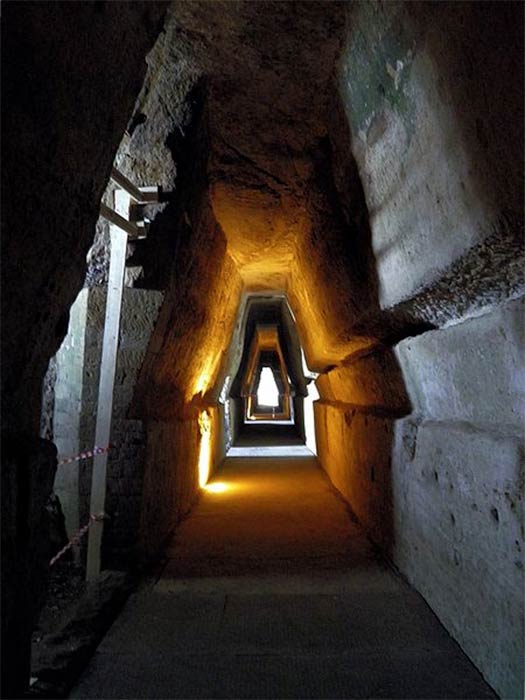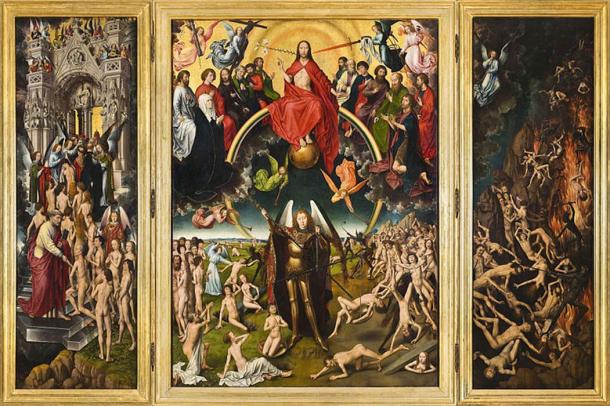A common cosmological theme within ancient cultures was the concept that the Netherworld, Underworld or afterlife was entered from this world through portals and these ancient gates were often built in stone. Gates and doorways in sacred settings are essentially thresholds and they lend themselves symbolically as entrances into other worlds and alternative realities. These ancient gates represented communications between this world and another world, between the living and the dead, and gates protected and guarded voyaging souls as they passaged from one realm to another.

Entrance to the Cave of the Sibyl, Cuma. ( CC BY-SA 2.0 )
In historian J.C. Cooper’s 1987 book An Illustrated Encyclopedia of Traditional Symbols , the author states that in the ancient world gates represented “ the protective, sheltering aspect of the Great Mother and were guarded by symbolic animals such as lions, dragons, bulls, dogs or fabulous beasts. ” In the Christian world perhaps the most famous spiritual gate is the ‘pearly gates’, the threshold at the entrance to heaven and protected by Saint Peter. Thresholds symbolize guarded safe passages between outer profane spaces, to inner, more sacred environs and these boundaries between the natural world and the supernatural world appear in all genres of storytelling, where so often heroes pass through them as they make their symbolic journey’s into darkness.

The Blessed at the gate to heaven with St. Peter by Hans Memling (1467-1471) National Museum ( Public Domain) .
Thresholds often manifest in fiction as rivers, bridges, mirrors and rabbit holes and while conceptual gateways and thresholds exist in religion, mythology, philosophy, poetry and folklore many ancient cultures crafted enormous stone gateways leading into temples and sacred sanctuaries, and these are some of the most spectacular and awe inspiring ancient gates.
Gatekeepers Of The Egyptian Pantheon
In ancient Egypt the Otherworld was the Duat and this concept was represented by a series of stone gates, doors and pylons over which the sun-god Ra ‘s solar boat of souls, Atet, sailed every night to the world of the dead. Ancient funerary texts provide archaeologists with detailed descriptions of the gates to the afterlife with more than 1,000 guardian deities listed.

The Egyptian Book of the Dead illustrates the Weighing of the Heart in the “ Duat,” on a feather balanced scale, with Anubis and Ammit waiting to devour unclean hearts, and Osiris located at the gateway to the paradise of Aaru. (British Museum) ( Public Domain )
Egyptian gates were always named after a goddesses or god and each threshold was guarded by a minor deity who permitted only the souls capable of pronouncing the secret name of the god himself to pass.
Like this Preview and want to read on? You can! JOIN US THERE ( with easy, instant access ) and see what you’re missing!! All Premium articles are available in full, with immediate access.
For the price of a cup of coffee, you get this and all the other great benefits at Ancient Origins Premium. And – each time you support AO Premium, you support independent thought and writing.
Ashley Cowie is a Scottish historian, author and documentary filmmaker presenting original perspectives on historical problems, in accessible and exciting ways. His books, articles and television shows explore lost cultures and kingdoms, ancient crafts and artifacts, symbols and architecture, myths and legends telling thought-provoking stories which together offer insights into our shared social history . www.ashleycowie.com.
Top Image : Pythagoras Emerging from the Underworld by Salvador Rosa (1662) Kimbell Art Museum (Public Domain )
By Ashley Cowie
Related posts:
Views: 0
 RSS Feed
RSS Feed















 August 27th, 2020
August 27th, 2020  Awake Goy
Awake Goy  Posted in
Posted in  Tags:
Tags: 
















